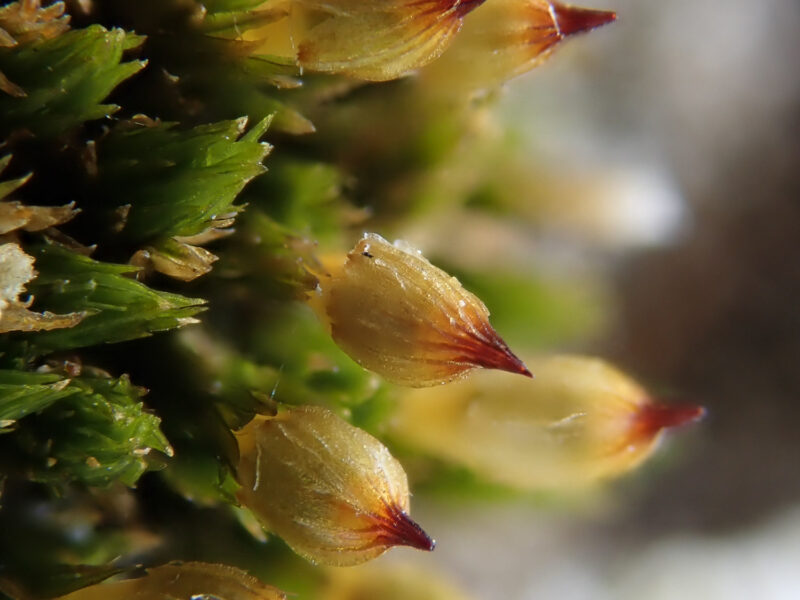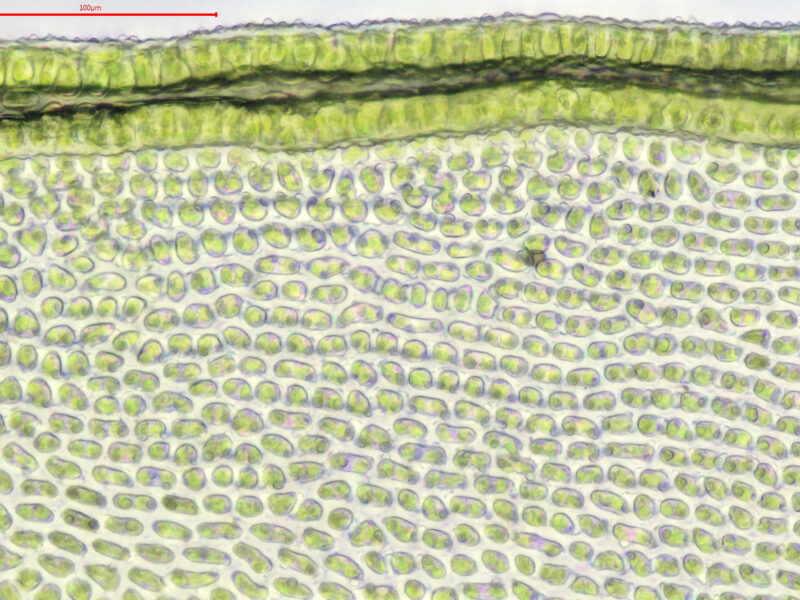Identification notes
In many areas, it is one of the last of the widespread Orthotrichum (and Lewinskya) species to mature its capsules, which are plump-looking, pale and eye-catchingly dark-tipped. Look for them ideally between March and May. Immature capsules are typically skinny-looking and can easily be confused with Lewinskya affinis, although the cushions are normally smaller and neater-looking than the more open tufts of that plant. If you are in any doubt and are deft of finger, pull off perichaetial leaves around the seta and you should see a few long whitish hairs arising from the base of the seta. These do not normally stick above the perichaetial leaves and many will find it much easier to search for the hairs with forceps under a dissecting microscope.
O. stramineum likes base-rich bark and can often be found on well-illuminated horizontal or inclined branches of such trees as ash and willows, especially where there is some shelter. In such places, it may be a member of a diverse community of epiphytic mosses and liverworts.
Read the Field Guide account

















